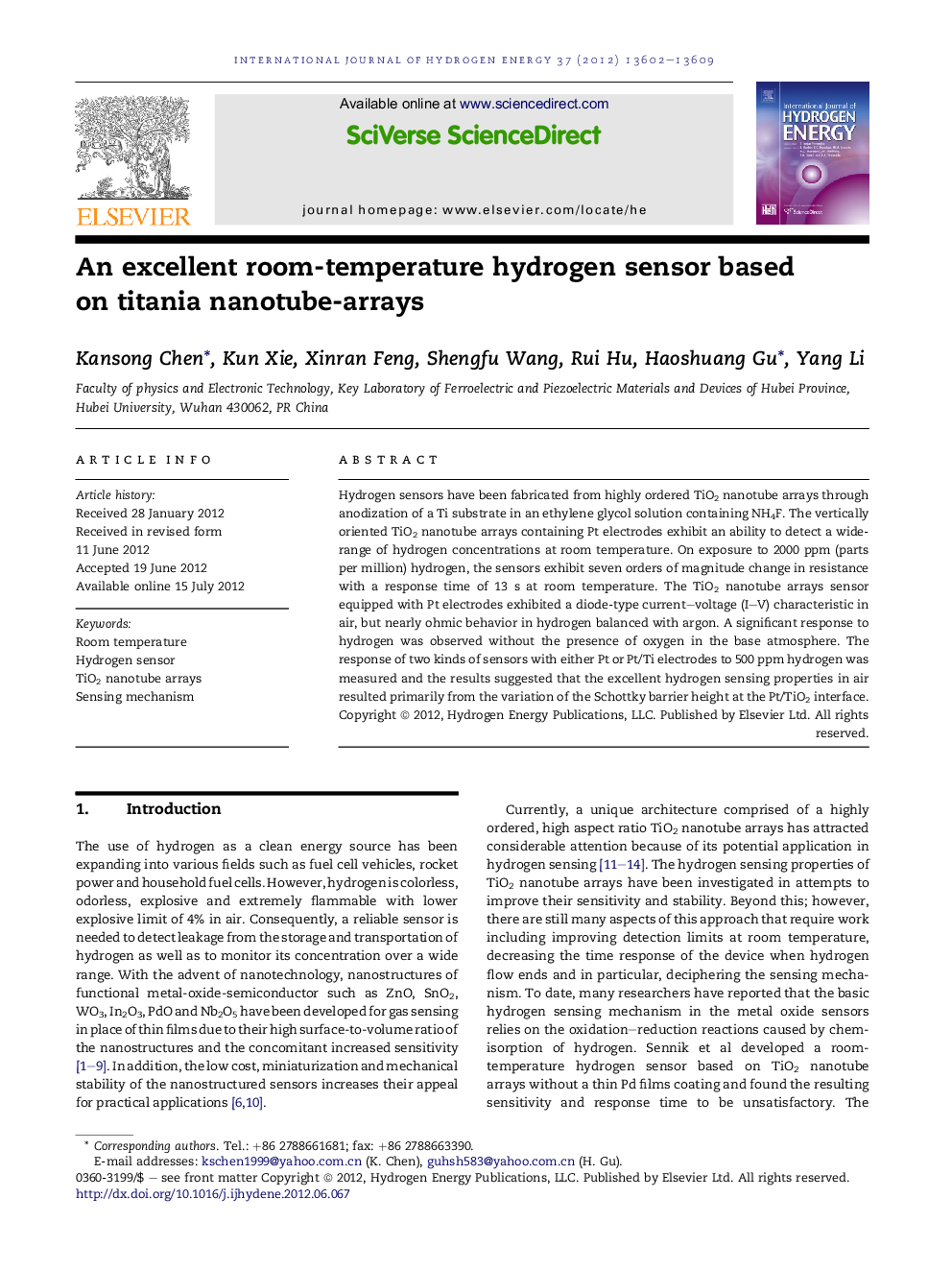| Article ID | Journal | Published Year | Pages | File Type |
|---|---|---|---|---|
| 1282258 | International Journal of Hydrogen Energy | 2012 | 8 Pages |
Hydrogen sensors have been fabricated from highly ordered TiO2 nanotube arrays through anodization of a Ti substrate in an ethylene glycol solution containing NH4F. The vertically oriented TiO2 nanotube arrays containing Pt electrodes exhibit an ability to detect a wide-range of hydrogen concentrations at room temperature. On exposure to 2000 ppm (parts per million) hydrogen, the sensors exhibit seven orders of magnitude change in resistance with a response time of 13 s at room temperature. The TiO2 nanotube arrays sensor equipped with Pt electrodes exhibited a diode-type current–voltage (I–V) characteristic in air, but nearly ohmic behavior in hydrogen balanced with argon. A significant response to hydrogen was observed without the presence of oxygen in the base atmosphere. The response of two kinds of sensors with either Pt or Pt/Ti electrodes to 500 ppm hydrogen was measured and the results suggested that the excellent hydrogen sensing properties in air resulted primarily from the variation of the Schottky barrier height at the Pt/TiO2 interface.
Graphical abstractFigure optionsDownload full-size imageDownload as PowerPoint slideHighlights► The Pt/TiO2 nanotube arrays exhibit room-temperature hydrogen sensitivities. ► The sensors show a maximum resistance variation of 7 orders at room temperature. ► The sensitivities can reach to 2 or 3 orders even at low hydrogen concentration. ► The fastest response is only 13 s as well as steady recovery time of 120 s. ► The sensing mechanism of the Pt/TiO2 nanotube arrays was detailed analyzed.
